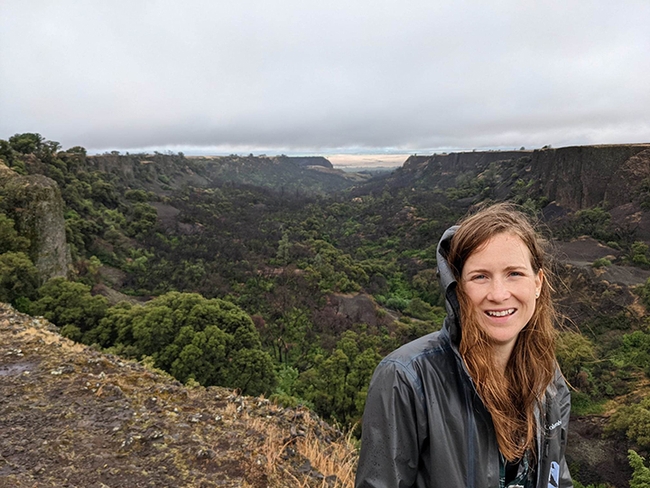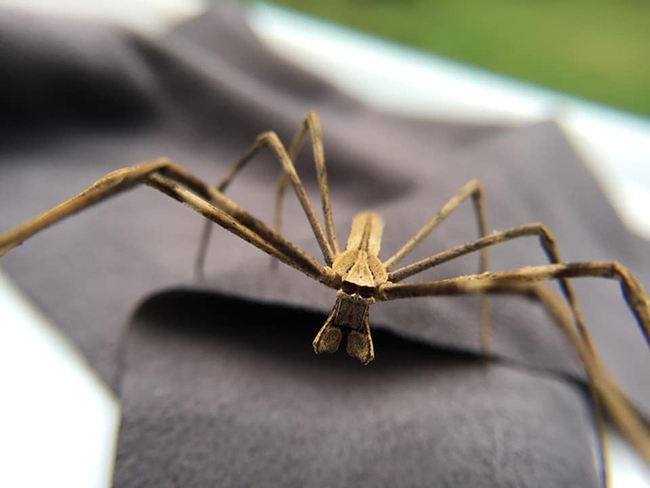- Author: Kathy Keatley Garvey
(Note: The main UC Davis Department of Entomology news page is at https://entomology.ucdavis.edu.)
What's a picnic without bugs!
The UC Davis Department of Entomology and Nematology is gearing up for the 110th annual UC Davis Picnic Day, set April 20.
This year, all of the entomology exhibits, including those at the Bohart Museum of Entomology, will be at Briggs Hall. (The Bohart Museum headquarters in the Academic Surge Building will be closed on Picnic Day.)
Picnic Day at Briggs Hall is from 9 a.m. to 5 p.m. Some of the activities will closer earlier.
The list of events and activities in and around Briggs Hall will include:
Bug Doctor
Briggs Hall Entryway
Graduate students will answer questions about insects. What's that bug? Attendees are encouraged to bring an insect or photo for identification.
Cockroach Races
Front of Briggs Hall
American cockroaches, Periplaneta americana, from Bob Kimsey's forensic lab, race on a specially made track, while roach fans cheer for their favorites. (Sometimes the athletes are named for faculty, friends or bystanders.)
Medical Entomology
122 Briggs Hall
Carla-Cristina "CC" Melo Edwards of the Geoffrey Attardo lab is coordinating the medical entomology display. Her research focuses on investigating the physiological mechanisms underlying pyrethroid resistance in Aedes aegypti (the yellow fever mosquito).
Diversity of Arachnids
122 Briggs Hall
Doctoral student Emma Jochim of the Jason Bond lab is coordinating an exhibit she created last year to display the diversity of arachnids, such as vinegaroons, whip spiders, tarantulas, and scorpions. "We'll have live animals and fact sheets that will give a general overview of their diversity, behavior, and habitat," Jochim said. "I'll also bring some curated specimens to show what goes into creating a scientific collection and talk about why collections are important for understanding biodiversity. "
Maggot Art
Briggs Courtyard
Artists--children and adults alike--create maggot art by dipping a live maggot into water-based, non-toxic paint. It's suitable for framing (or at least a spot on the refrigerator door). This event will close at 3 p.m. this year (last year it was at 5 p.m.)
Dr. Death
122 Briggs Hall
Forensic entomologist Robert Kimsey will display and discuss his work in his "Dr. Death" booth. Last year Kimsey pin-mounted and identified flies from various cases and research efforts, and displayed studies on the sequence of development of individual maggots, calling attention to the development and sequence of communities of insect maggots. "By these means, approximations about how long a person has been dead can be made," he told the crowd.
Entomology at UC Davis
122 Briggs Hall
Displays of insects, including bees, ants and more. Graduate students, faculty and emeriti will staff the tables.
Bohart Museum of Entomology
Front of Briggs Hall
A pop-up tent, staffed by the Bohart Museum, will include stick insects (walking sticks) and Madagascar hissing cockroaches. "We are excited to be part of the bigger department's offerings," said Tabatha Yang, education and outreach coordinator. Give-aways are also planned.
Fly-Tying
Briggs Hall courtyard
Fly Fishers of Davis will show attendees how to tie a fly. The recipients take home the flies.
Insect-Themed T-Shirt Sales
Briggs Hall entryway
Members of the Entomology Graduate Student Association (EGSA), led by president Mia Lippey, will be selling their popular insect-themed t-shirts, including The Beetles. The T-shirt, EGSA's all-time best seller, is a take-off of the cover of The Beetles' Abbey Road alum. However, instead of the Beatles crossing the road in a single file, four beetles (family names Phengogidae, Curculionidae, Cerambycidae and Scarabaeidae) do so.
Mosquito Control Booth
Entrance to Briggs (below front steps)
Sacramento-Yolo Mosquito and Vector Control District will be providing information on mosquitoes, answering questions, and handing out give-a-ways, including mosquito repellent.
UC Statewide Integrated Pest Management (UC IPM)
Briggs Hall Courtyard
“We plan to have many of our usual materials on display and will be giving out the live lady beetles (aka ladybugs) again,” said urban and community IPM educator Lauren Fordyce. “We purchase them from a local garden center. In addition to that, we plan to have a prize wheel that adults and kids can spin, answer a question, and win a prize if they answer correctly. We may also have temporary insect tattoos to give away.”
Ranked Third in the Country. The UC Davis Department of Entomology and Nematology is ranked third among “The Best Entomology Colleges in the United States for 2024" by universities.com. The department includes 24 active and 19 retired faculty; 28 graduate students (five in the master's degree program and 23 in the doctoral degree program); 47 undergraduate entomology majors (based on the Office of Academic Support and Instructional Services (OASIS) Student Reports); and a staff comprised of 27 academics (non-faculty), 24 career, and 56 student assistants. Professor and chair of the department is molecular geneticist and physiologist Joanna Chiu.
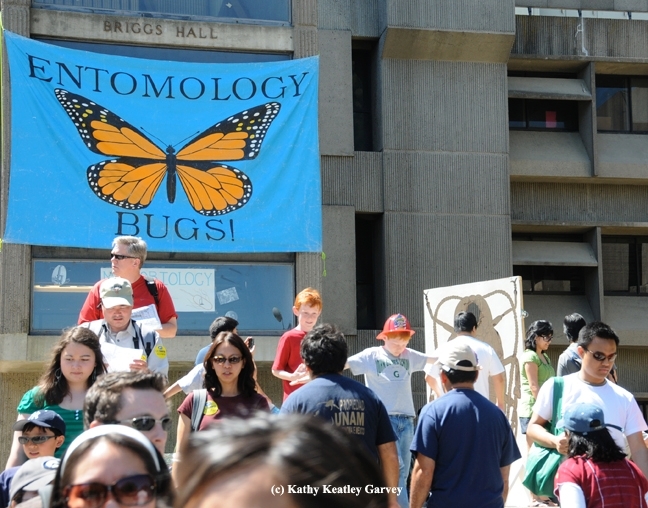
- Author: Kathy Keatley Garvey
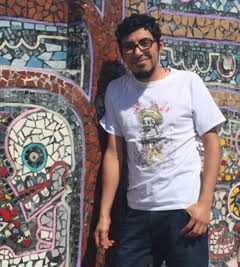
Arachnologist Rodrigo Monjaraz-Ruedas of San Diego State University's Department of Biology, will speak on "Ring Species, Ring Speciation or a Ring of Species? An Example with California Mygalomorph Spiders" at 4:10 p.m., Monday, Oct. 30 in Room 122 of Briggs Hall. It also will be on Zoom.
The Zoom link:
https://ucdavis.zoom.us/j/95882849672
"Ring species can be defined as a chain of interbreeding populations which expands along two pathways around a geographic barrier, where terminal forms can coexist without interbreeding," Monjaraz-Ruedas writes in his abstract. "A broken ring species model preserves the geographic setting and fundamental features of an idealized model but accommodates varying degrees of gene flow restriction through evolutionary time. Members of the genus Calisoga are distributed around the Central Valley of California, and previous genetic studies have shown that this is a lineage-rich complex of mygalomorph spiders, with evidence to suggest that Calisoga might be a case of ring speciation. Here we examine broken ring species dynamics in Calisoga spiders, using UCEs and mitogenomes we test key predictions of timing, ancestry, connectivity and terminal overlap. I will discuss why ring species should not be viewed as homogeneous entities, but rather as heterogeneous units with different predicted evolutionary dynamics in different geographic parts of the ring."
Monjaraz-Ruedas joined the Marshal Hedin lab at San Diego State University as a postdoctoral research fellow in 2020. He studies "Phylogenomic, spatial phylogenetics and conservation prioritization in trapdoor spiders (and kin) of the California Floristic Province."
The Hedin lab focuses on arachnids, with particular emphasis on mygalomorph spiders and Opiliones (harvesters)," according to its website. "Species discovery, delimitation and description is important to us--although the biological world is amazingly diverse, most biodiversity remains undiscovered and undescribed. We spend a considerable amount of time conducting fieldwork--the western US and Appalachian mountains are hotspots for our research efforts. Cave arachnids interest us! In the lab we strive to be integrative, but our strength lies in molecular phylogeography and phylogenomics."
Monjaraz-Ruedas' most recent publications include:
- Cruz-López, J. A., Monjaraz-Ruedas, R. Colmenares, P. A. & Francke, O. F. 2021. Historical
biogeography of a neglected family of armoured harvestmen (Opiliones: Laniatores: Icaleptidae) with the first record and a new genus for tropical Mesoamerica. Invertebrate Systematics. 35: 493– 513. - Francke, O. F., Monjaraz-Ruedas, R., Cruz-López, J. A. 2021. Biodiversity of Huautla Cave System, Oaxaca, Mexico. Diversity. 13: 429.
- Monjaraz-Ruedas, R.,. Francke, O. F. & Prendini, L. 2022. World Travelers: parthenogenesis and ecological tolerance enable multiple colonization events by the widespread short-tailed whipscorpion, Stenochrus portoricensis (Schizomida: Hubbardiidae). Insect Systematics and Diversity. 6(1): 7, 1–17.
- Monjaraz-Ruedas, R., Mendez, R.W., Hedin, M. (2023). Species delimitation, biogeography, and natural history of dwarf funnel web spiders (Mygalomorphae, Hexurellidae, Hexurella) from the United States / Mexico borderlands. Zookeys. 1167: 109–157.
- Monjaraz-Ruedas, R., Starret, J., Dean Leavitt, D., Hedin, M. (In Review). Ring species dynamics in California mygalomorph spiders (Nemesiidae, Calisoga). The American Naturalist.
Monjaraz-Ruedas holds three degrees from the Universidad Nacional Autónoma de México (UNAM): a bachelor's degree in taxonomy; a master's degree in morphological systematics; and a doctorate in molecular phylogenetics. His doctoral dissertation: “Systematics of the genus Stenochrus Chamberlin, 1922 (Schizomida: Hubbardiidae).”
He has guest-lectured on arachnids at San Diego State University, and was a member of the UNAM science faculty, serving as a lecturer in systematic biology from 2019 to 2020. He also worked as an assistant collection manager of the arachnids collection, UNAM Biology Institute, from 2010-2013.
Seminar coordinator is Brian Johnson, associate professor, UC Davis Department of Entomology and Nematology. For Zoom technical issues, he may be reached at brnjohnson@ucdavis.edu. The list of seminars is posted here.
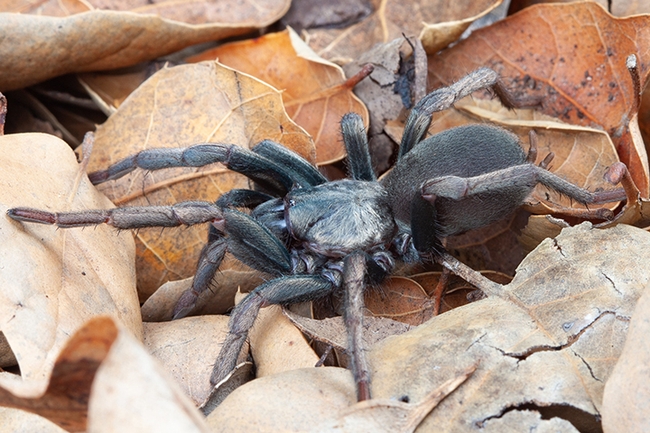
- Author: Kathy Keatley Garvey
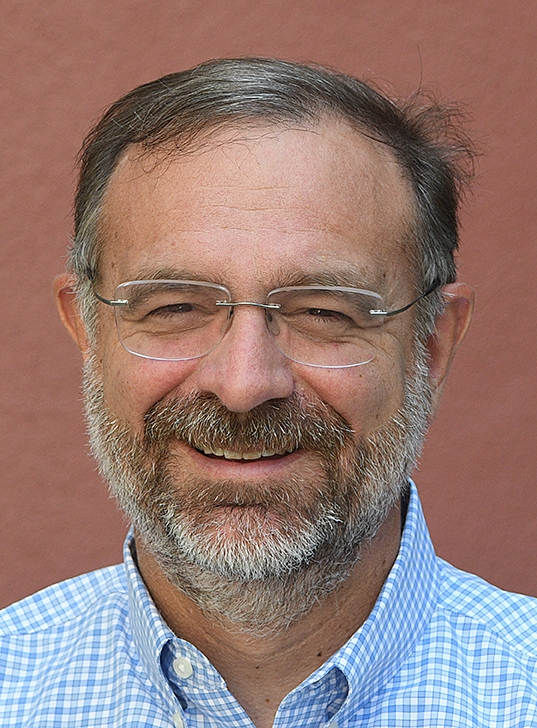
Professor Bond is serving a 2023-2025 term with president Linda Rayor of Cornell University's Department of Entomology, and then will assume the presidency. Bond specializes in the evolutionary diversification of terrestrial arthropods, specifically spiders, millipedes, and tenebrionid beetles. Rayor, a behavioral ecologist, focuses her research on the evolution of sociality in spiders.
AAS has played a huge role in Bond's career, with lifelong friends, colleagues, and collaborators who extend back nearly 30 years. "I consider it an honor to serve as AAS president."
AAS, founded in 1972, aims “to further the study of arachnids, foster closer cooperation and understanding between amateur and professional arachnologists, and to publish the Journal of Arachnology, according to its website. The journal is published three times a year.
A member of AAS since 1993, Bond co-hosted the 2022 AAS meeting at UC Davis, which included an outreach event, “Eight-Legged Encounters,” at the Bohart Museum of Entomology.
Bond joined the UC Davis faculty in 2018 after a seven-year academic career at Auburn University, Ala. He served as professor of biology, director of the Auburn University Museum of Natural History (2011-2105); chair of the Department of Biological Sciences from January 2016 to July 2018; and as curator of arachnids and myriapods (centipedes, millipedes, and related animals) from August 2011 to July 2018.
Bond also is the co-editor-in-chief of the journal Insect Systematics and Diversity, published by the Entomological Society of America. He and co-editor Hojun Song of Texas A&M began serving their four-year terms in 2022.
A veteran of the U.S. Army, Bond served as a UH-60 Blackhawk helicopter crew chief upon graduation from high school.
Jason received his bachelor's degree in biological sciences, cum laude, in 1993 from Western Carolina University, Cullowhee, and his master's degree in biology in 1995 from Virginia Polytechnic Institute and State University, Blacksburg. He earned his doctorate in evolutionary systematics and genetics in 1999 from Virginia Tech.
Research in his lab currently focuses on the California trapdoor spider fauna, specifically species delimitation, phylogeography, systematics and taxonomy; Bond has described many new spider taxa to include new families, genera, and more than 50 species.
- Author: Kathy Keatley Garvey
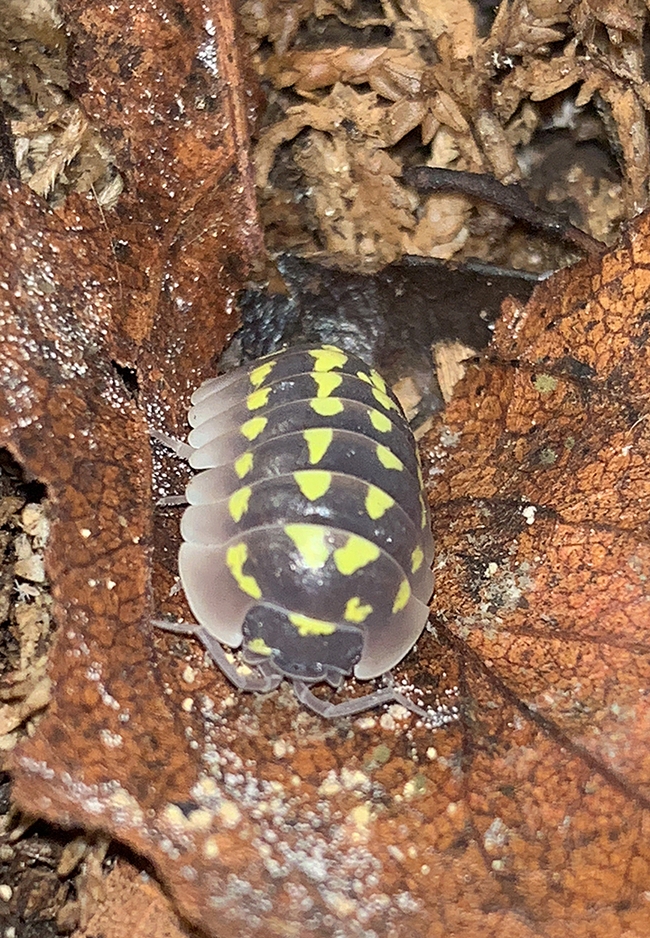
Following on the heels of its 2022 open house on "Eight-Legged Wonders," the Bohart Museum of Entomology will showcase spiders, millipedes, centipedes, scorpions, tarantulas and isopods—and more—at its open house themed “Many-Legged Wonders” on Saturday, March 18.
The event, free and family friendly, will be from 1 to 4 p.m. in Room 1124 of the Academic Surge Building, 455 Crocker Lane, UC Davis campus. A family arts and crafts activity is also planned.
Tabatha Yang, education and outreach coordinator for the Bohart announced that doctoral candidates Emma Jochim and Xavier Zahnle of the Jason Bond arachnology lab will dispel myths about spiders and millipedes at a question-and-answer session from 1 to 1:30. Doctoral student Iris Quayle will moderate.
From 1:30 to 4 p.m., will be the general open house with a showing of live animals and specimens. UC Davis student Elijah Shih will display his isopods, which are crustaceans and have 14 legs.
Shih, a third-year transfer student studying neurobiology, physiology and behavior, says that “Isopods come in many morphs and sizes. There are many colorful and beautifully patterned isopods, some natural, some man made. Isopods are crustaceans and require moisture to breathe and molt properly. Some species have the ability to conglobate or roll up in to the ball where as others do not. They are great for helping create a bioactive system for reptiles, planted tanks, and a great feeder for young reptiles and amphibians.”
“There are many isopod species in the world,” Shih related, “and at least five common isopod species that are found in California: Porcellio laevis, Porcellio scaber, Armadillidium vulgare, Porcellio dilatatus, and Cubaris marina. Their morphs are considered wild type.”
Shih, who hopes to pursue a career in veterinary medicine, said he houses “many reptiles, both aquatic and terrestrial, such as the box turtle and gargoyle gecko. I wanted to create bioactive environments for my reptiles—(mainly to not have to pick up the feces)-- so I looked for ways to make that possible. I need something that was small, agile, prolific, and safe to be eaten. Isopods, better known as Rollie pillows or pill bugs, are the best solution for me. I had my isopods, but to complete the cleanup crew, I added springtails to help clean up any leftover food, but more importantly, the mold.”
Bohart Museum research associate Brittany Kohler, the "zookeeper" of the Bohart petting zoo, says the current residents include:
- Princess Herbert, a Brazilian salmon-pink bird-eating tarantula (Lasiodora parahybana), age estimated to be around 20 (current oldest resident)
- Peaches, a Chilean rose hair tarantula (Grammostola rosea)
- Coco McFluffin, a Chaco golden knee tarantula (Grammostola pulchripes)
- Beatrice, a Vietnamese centipede (Scolopendra subspinipes), newest resident
- Two black widows (Latrodectus hesperus)
- One brown widow (Latrodectus geometricus)
Among the other residents are Madagascar hissing cockroaches, a giant cave cockroach, stick insects, a bark scorpion and ironclad beetles.
The Bohart Museum, directed by UC Davis distinguished professor Lynn Kimsey, houses a global collection of eight million insect specimens, plus the petting zoo and a gift shop stocked with insect-themed books, posters, jewelry, t-shirts, hoodies and more. Dedicated to "understanding, documenting and communicating terrestrial arthropod diversity," the Bohart Museum was founded in 1946 and named for UC Davis professor and noted entomologist Richard Bohart. The insect museum is open to the public Mondays through Thursdays, from 8 a.m. to noon, and 1 to 5 p.m.
More information is available on the Bohart website at https://bohart.ucdavis.edu or by emailing bmuseum@ucdavis.edu.
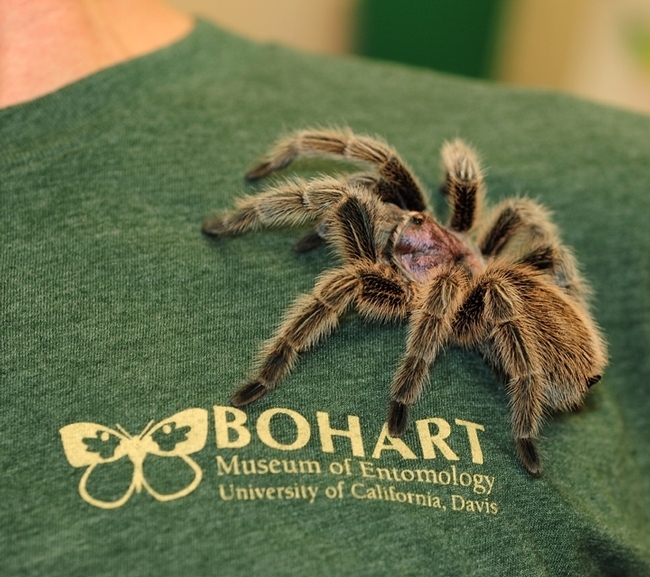
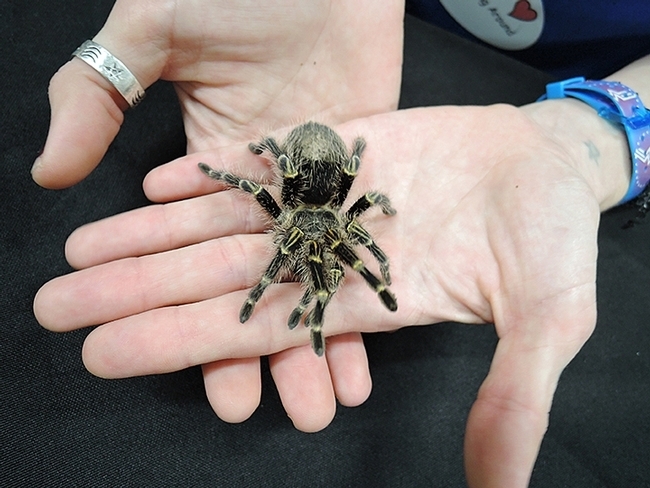
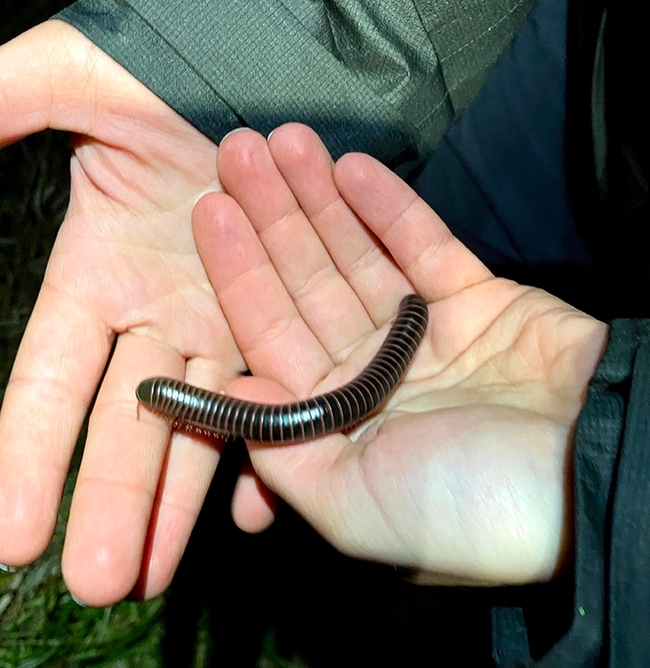
- Author: Kathy Keatley Garvey
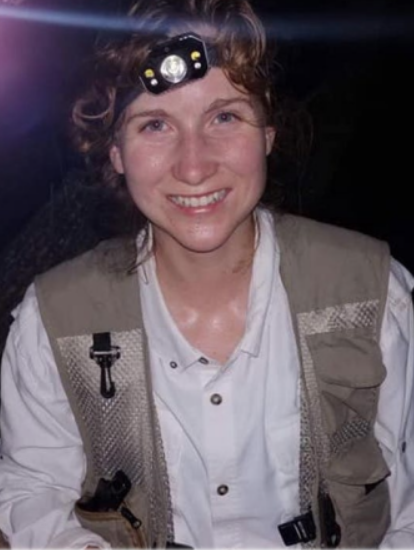
Her seminar also will be virtual. The Zoom link is https://ucdavis.zoom.us/j/95882849672. A coffee social will take place in 158 Briggs from 3:30 to 4:10 p.m.
Chamberland is a member of the laboratory of Jason Bond, associate dean, UC Davis College of Agricultural and Natural Resources, and professor and the Evert and Marion Schlinger Endowed Chair, UC Davis Department of Entomology and Nematology.
“Net-casting spiders (Deinopidae) comprise three genera with enigmatic evolutionary histories. Deinopisand Asianopis, the ogre-faced spiders, are best known for their giant light-capturing posterior median eyes (PME), whereas Menneus does not have enlarged PMEs,” Chamberland says in her abstract. “Molecular phylogenetic studies have revealed discordance between morphology and molecular data. We employed a character-rich, ultra-conserved element (UCE) dataset and a taxon-rich cytochrome oxidase I (COI) dataset to reconstruct a genus-level phylogeny of Deinopidae, aiming to investigate the group's historical biogeography, and examine PME size evolution. Although the phylogenetic results support the monophyly of Menneus and the single reduction of PME size in deinopids, these data also show that Deinopis is not monophyletic. Deinopid biogeographic history reflects the separation of Western Gondwana as well as long-distance dispersal events.”
Chamberland, who studies the evolution and biogeography of spiders, joined the Bond lab in 2021. She holds a doctorate in biology (2020) from the University of Vermont, Burlington, where she studied with Ingi Agnarsson. Her dissertation: "From Gondwana to GAARlandia: Molecular Phylogenetics and Historical Biogeography of Spiders." She received her bachelor's degree in biology and anthropology in 2013 from the University of Vermont.
“As an undergraduate at the University of Vermont, I was introduced to deinopids, the ogre-faced spiders, and it was love at first sight,” Chamberland related. “With a wide range of dispersal propensities and diverse hunting strategies, spiders have been a rich source for me to explore biogeographic and evolutionary questions. I would like to continue my work with historical biogeography and spiders after my postdoc and help foster the upcoming generation of arachnologists. I enjoy teaching, especially through the lens of phylogenetics and systematics, and I am working towards finding a teaching career where I can teach, mentor, and continue to ask evolutionary questions.”
Chamberland is the lead author of “Biogeography and Eye Evolution of the Ogre-faced Spiders," published Oct. 22, 2022 in Scientific Reports and co-authored by Ingi Agnarsson, Iris Quayle, Tess Ruddy, James Starrett and Jason Bond.
Chamberland and Bond co-hosted the 2022 American Arachnological Society Summer Symposium at UC Davis and she also delivered a research presentation at the symposium. At both UC Davis and at the University of Vermont, she has led and taught lab and field techniques, molecular methods and data analyses, and arachnology to high school, undergraduate, and graduate students, resulting in publications on systematics, evolution, and biogeography of spiders.
She earlier served as the invertebrate collections manager at the Zadock Thompson Zoological Collections (2020-2021), University of Vermont.
The department seminars, coordinated by urban landscape entomologist Emily Meineke, assistant professor, are held on Wednesdays through March 15. (See schedule.) Eight of the 10 will be in-person in 122 Briggs Hall, and all will be virtual.
